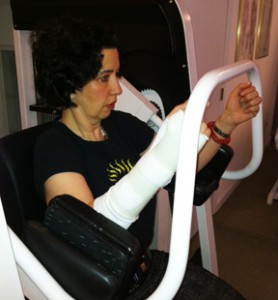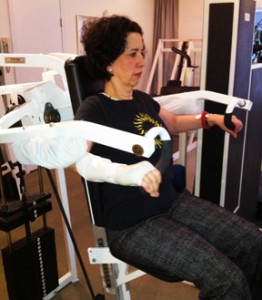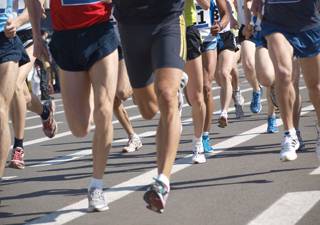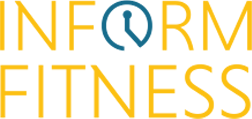![]()
As a college student I enjoyed youthful excess and ‘endless’ nights. But now matured, I have learned that ample and quality sleep is absolutely crucial to a healthy, long life. Then I had kids.
Mainstream weight-loss advice typically revolves around exercise and nutrition.
However, the fact that sleep is one of the most important factors to attaining a healthy weight is often left out of the mix. Which is why I dedicated an entire chapter in my book, Power of 10 called “Rest and Recovery”. Being well rested can help control appetite, prevent weight gain, and will give you more energy for exercise and meal planning.
Symptoms you might be experiencing and telling you that you may not be getting enough rest include fatigue, low energy levels, nodding off easily, and irritability. When you’re tired, stress can lead you right to the refrigerator for your favorite ‘comfort foods’. Even worse, it might set into motion engaging in the ill-fated late night snacking.
“When you don’t get enough sleep, your body experiences physiological stress and, biochemically, you store fat more efficiently,” says Michelle May, MD, author of Am I Hungry? What to Do When Diets Don’t Work.
Research shows that inadequate sleep can torpedo your weight loss efforts, impair your concentration, and even mimic the symptoms of impaired glucose tolerance, which can lead to diabetes and hypertension.
Other hazards of fatigue include a blah mood, or worse, a cranky disposition. Cranky negatively affects your work, your relationships, and your life. Sometimes I think that’s why so many New Yorkers I come across are grumpy. They live fast-paced, highly stressed and achievement-driven lives, and they’re probably not getting enough quality sleep as a result.
Fortunately, this problem can be remedied. Beginning with an increased appreciation for how sleep impacts your weight-loss efforts, the quality of your life, and your overall health. Here are seven tips that can help you more easily enter the Land of Nod:
1. Create the right environment. Get your body and mind in the habit of using your bedroom for sleeping. If you frequently sit in bed to pay bills, do your homework, eat, talk on the phone, etc., your mind will expect that the bedroom is for daytime activities. I thank my wife for curing me of the watching-television-until-I-fall-asleep habit. Now our bedroom is furnished with soft lighting, comfortable bedding, relaxing music and the random Matchbox™ car. Other tricks include turning the temperature down a few notches and turning the clock away from your view.
2. Get into a routine. This may be hard for people with wavering, active schedules, like students and parents. On busy days it is difficult—but crucial—to be firm with a routine. If you normally don’t fall asleep until the wee hours of the morning, or if you don’t have a sleep schedule at all, try going to bed a half an hour earlier each week, or set a time to get in bed and stick with it to train your body.
3. Limit food and beverage intake before going to bed. As you lie down to sleep, acids in the stomach level out, making heartburn and indigestion more likely to occur. Also, your metabolism increases slightly to digest food, which can also raise your energy level. Stop eating at least three hours before your scheduled bedtime. If you must snack on something, keep it small and avoid high-fat foods, which take longer to digest. Alcohol, as you may have discovered, also damages sleep quality. After its sedative effects wear off, your sleep patterns will suffer. I recently read this interesting piece in Scientific American regarding alcohol and sleep.
4. Consider a natural approach. Certain herbal teas can help you relax and fall asleep. Chamomile, for example, is a popular herb that slows the nervous system and promotes relaxation. Other liquids, such as a small glass of warm milk, may also help. Unfortunately, I loathe tea and warm milk so this is not an option for me.
5. Know when and how to nap. Most sleep counselors recommend napping for no longer than 20 minutes. Exceeding 20 minutes could leave you feeling groggier and make it harder for you to fall asleep at bedtime. If you know you have to stay up late, or if you have an erratic sleep schedule (especially new moms), take a 20-minute nap during the day. You’ll be more productive and in a better mood. I know, easier said then done.
6. Take control of your worries. Stress, surprises, and changes can take a toll on your sleep habits. Schedule some downtime each day for meditative activities like stretching or a hot bath – or actual meditation. If thinking keeps you up at night, get out of bed and try to be productive. Deal with those thoughts (pay the bill that you are worried about, make a to-do list, etc.) in a positive way, and come back to bed when you’re ready to sleep.
7. Get a check-up. If you toss and turn most nights, it may be time to see a physician. You could be suffering from one or more sleep disorders, including insomnia or sleep apnea. The sooner you find out what’s wrong, the sooner you can fix it. Sleep disorders are dangerous to your health, so if you suspect something is wrong, please tend to it immediately.
Have a get to sleep tip? Share with us how you get to the Land of Nod.
![]()









